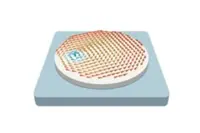 A team of scientists, from the Moscow Institute of Physics and Technology (MIPT) and the Russian Quantum Centre, claim to have demonstrated a method of exciting magnetic vortices using less current.
A team of scientists, from the Moscow Institute of Physics and Technology (MIPT) and the Russian Quantum Centre, claim to have demonstrated a method of exciting magnetic vortices using less current.
Controlling magnetic vortices, through spin or otherwise, is what scientists are researching as a foundation for the electronics of the future, called spintronics. In spintronics, information can be transmitted by spin rather than electronic charge, the charged particles do not necessarily need to move anywhere as information will be transmitting ‘along the chain’ via the spin.
Using spin to transmit a unit of information requires less time and energy than a similar operation in modern electronics.
The scientists examined the process of an alternating radio frequency current, of approximately 1GHz, passing along the surface between a ferromagnet and topological insulator.
The study found that in order to excite magnetic vortices with a topological insulator, AC must be used, as DC has almost no effect on them. When AC was applied, a sharp resonance excitation of the vortices was observed. The scientists also noted that the current densities required to excite the vortices were several times lower than previously observed.
Previous experimental studies have shown that current passing along the surface between different layers of a heterostructure such as this is able to generate a torque. The authors of the paper have demonstrated that it is possible to effectively excite magnetic vortices using this torque.
Research into spintronics is essential for the development of modern technologies as Moore’s Law is pushing the technology to its limits. The Russian scientists say it is possible that in the future all technologies will switch from using electrical charges to particle spins, which require minimal amounts of energy and will increase speed thousands of times.
Author
Tom Austin-Morgan
Source: www.newelectronics.co.uk

